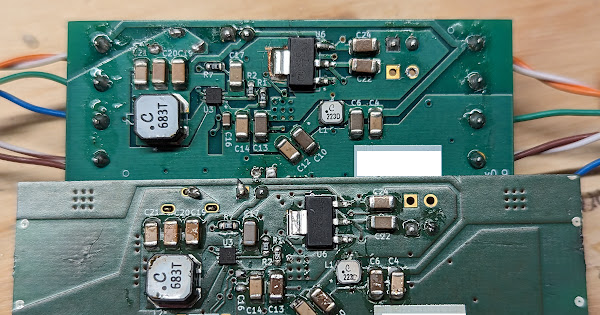This photo shows the power conversion side of two versions of the same board. Input is up to 60V DC, board converts to 5V and then down to 3.3V.
The top board works correctly all the time. But the bottom board has strange issues. Everything works perfectly when I connect it to my bench power supply at 53V. The board powers up with no problems. When I connect it to the daisy chain of other boards, it suddenly will no longer power on, despite ~54V being passed through correctly to downstream boards.
This is a real head-scratcher for me, and I’m having trouble making sense of it. I’m not so much looking for The Solution as to what steps I should take to troubleshoot this. There were some issues attaching the image, so in case it doesn’t show up.



Thank you, I will reflow C4 and add C16, but C10 and C14 look fine from the sides.
The messy/missing joints near C17, C19, and C20 are optional components for the other side. (Unused surface mount USB port with through-hole mounting pins and an unused jumper.) Right-hand jumpers are all optional and unused from an earlier prototyping stage.
What do you mean by extra traces by the IC? And you’re absolutely right about the small IC. It’s the MAX17640, and at 2mm x 2mm it’s a piece of work to land correctly.
I was referring to it more as a difference which might be the source of the issue. For example, one via is fairly close to the pad for C16 which could be shorted (probably isn’t, but still a good idea to check). It could be a wiring issue but could also be a board manufacture issue.